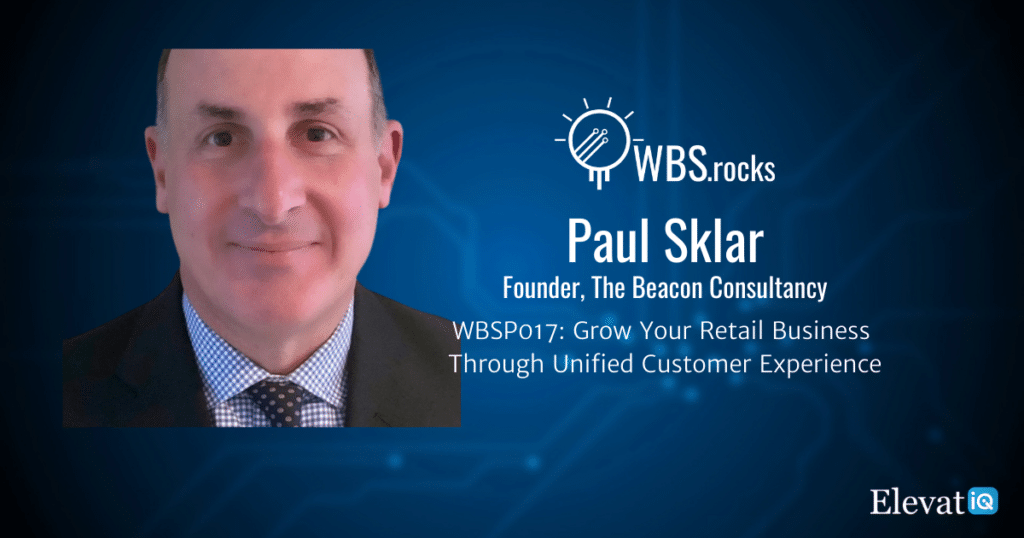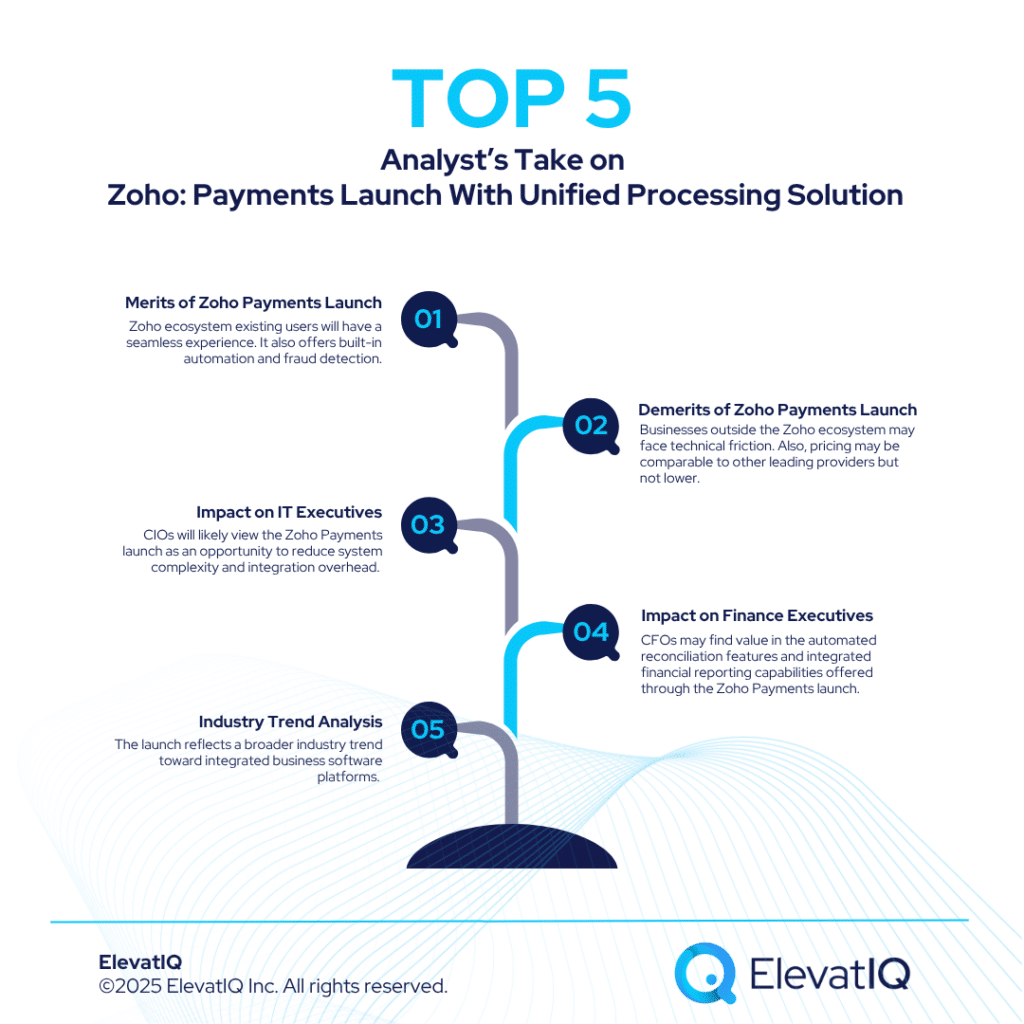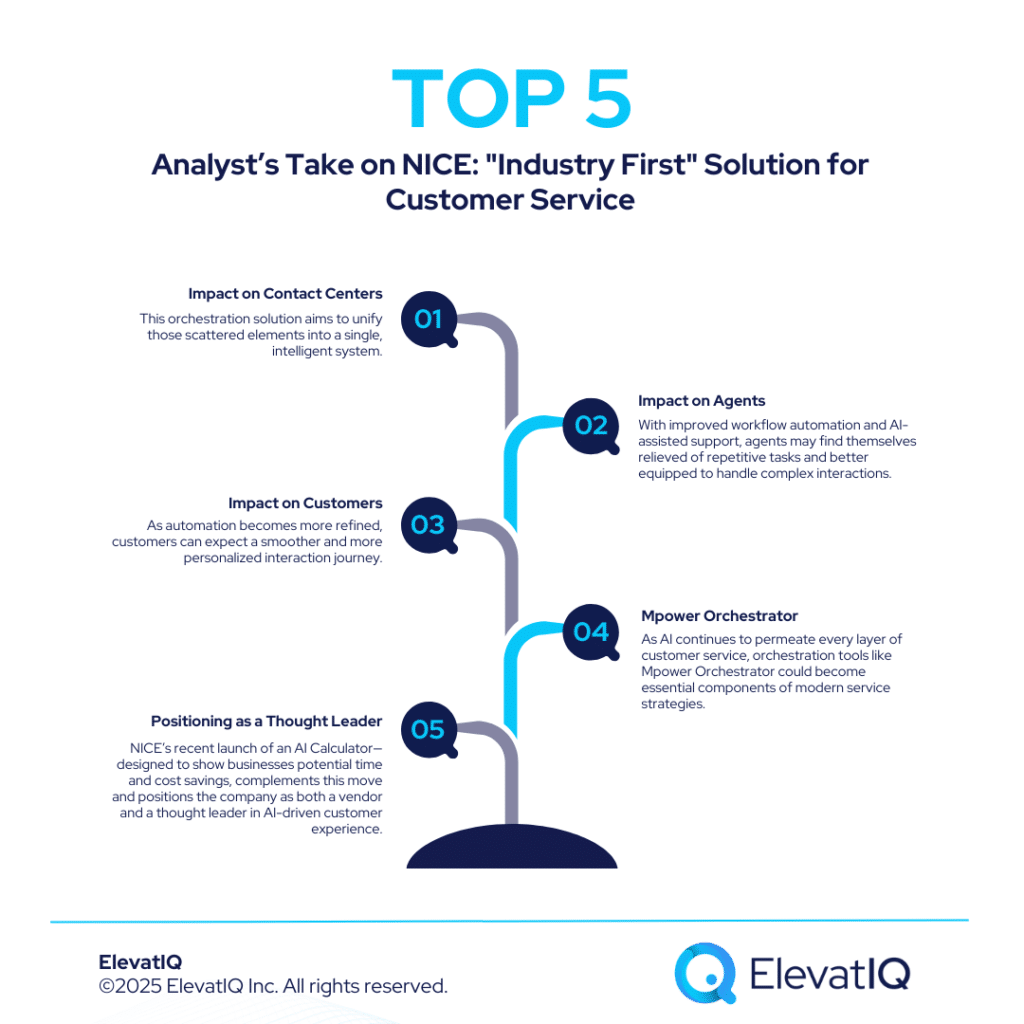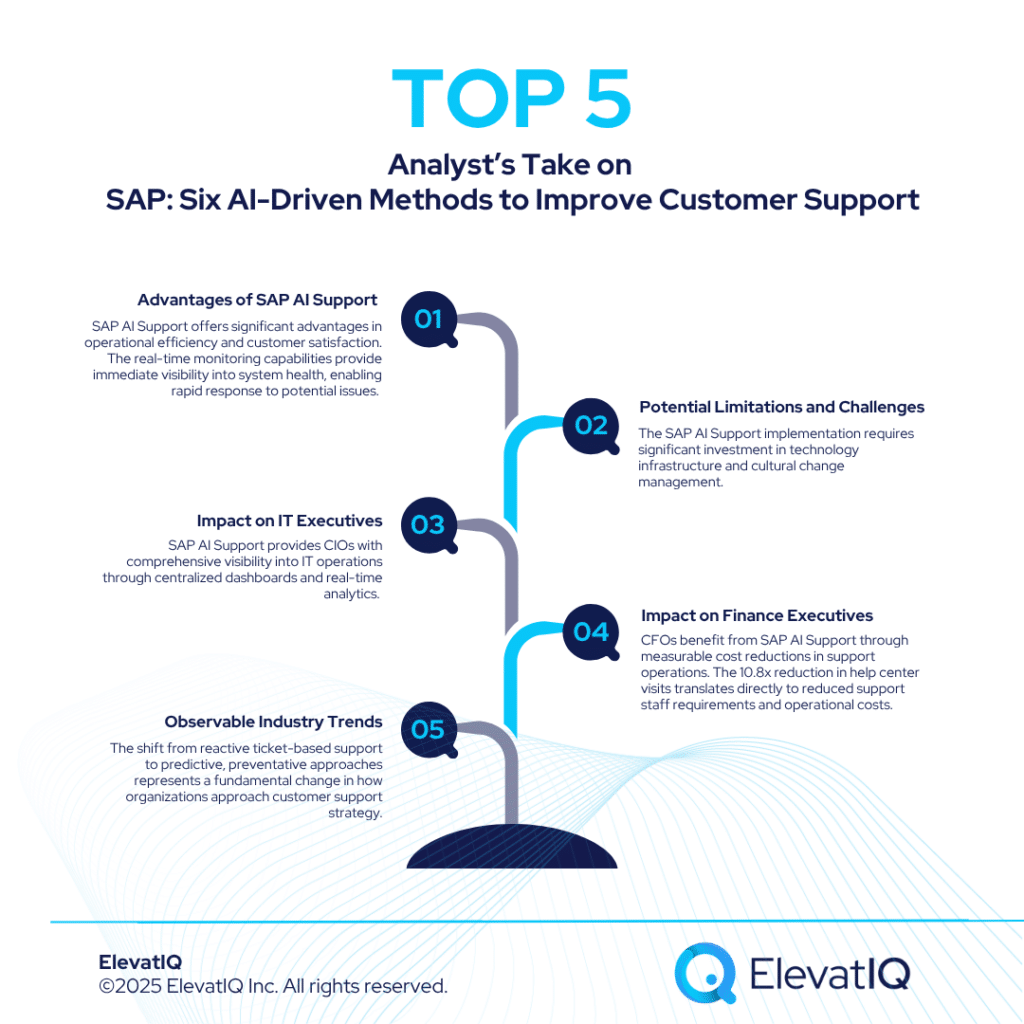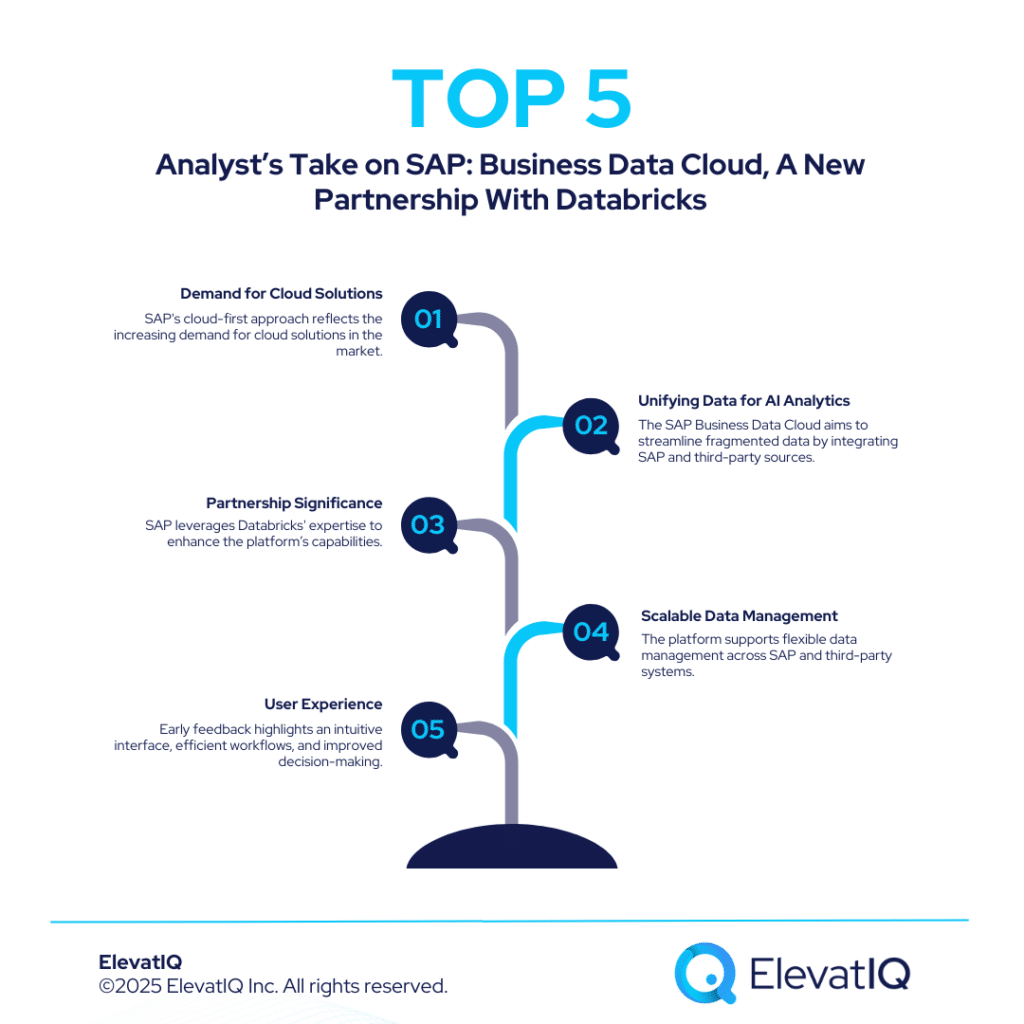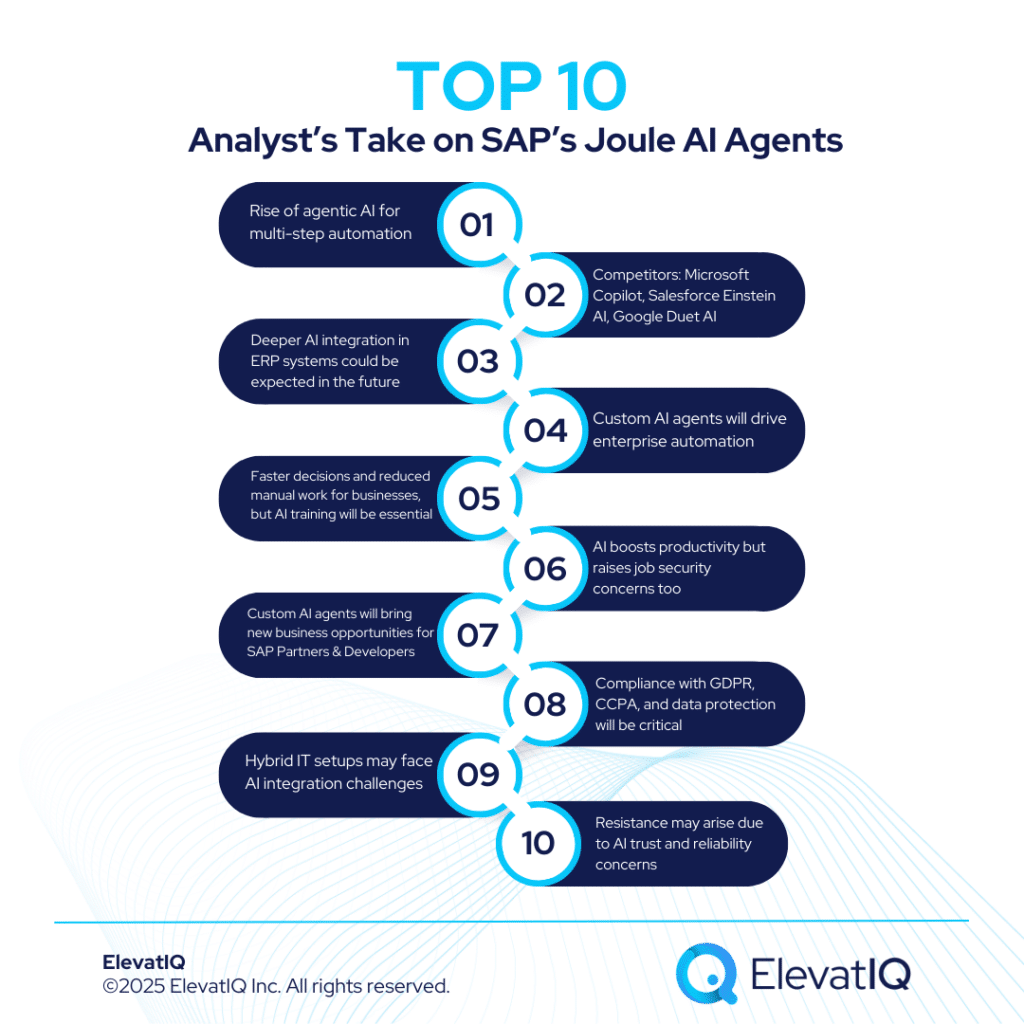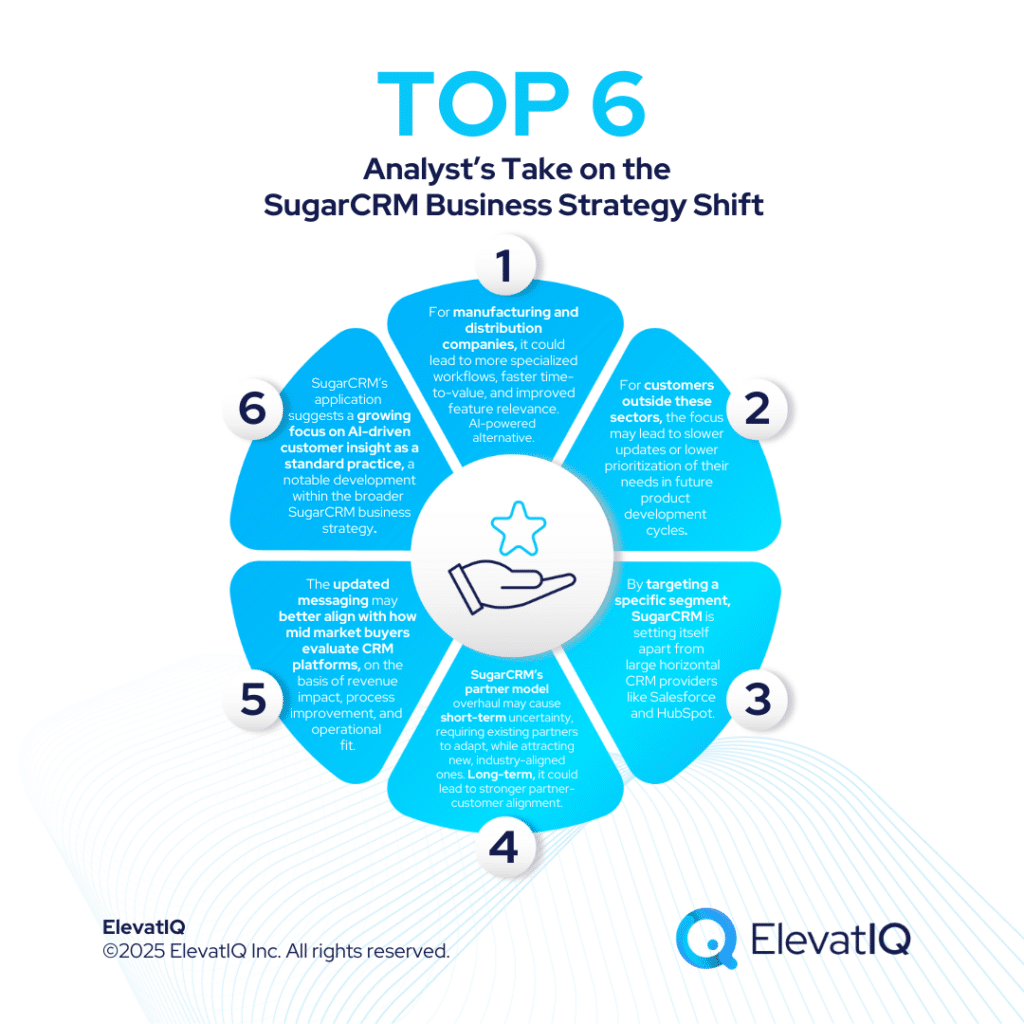Last Updated on November 27, 2023 by Sam Gupta
In this episode, we have our guest Paul Sklar who takes us through the retail industry’s deep dive. He also walks us through how the industry operated in the past and what retail executives need to know about the changing landscape for the retail industry due to changing customer expectations and increasing need for a better and comprehensive customer experience than siloed thinking.
Chapter Markers
- [0:00] Intro
- [2:49] Personal journey and current focus
- [8:03] Perspective on growth
- [11:36] Differences between retail and wholesale businesses
- [15:15] Process and system challenges because of blurring lines in business models
- [20:10] Stories of customer experience and customer service
- [26:44] Customer Service challenges in the age of social media
- [27:56] Closing thoughts
- [30:01] Outro
Key Takeaways
- As we get over the apogee of where the pandemic is right now, the bigger retailers are going to continue to get bigger. We’re gonna see a resurgence in local, and the middle is going to continue to get squeezed.
- As we bounce back, we will see digital commerce become more popular and more widespread, and retailers are going to start to re-architect their systems in order to support concepts like unified commerce, unified retail. That’s like the next evolution of omnichannel retail.
- We’re going to look at the loyalty data, the CRM data, we’re going to look at all that data together because customer behavior to how we predict customer behavior is going to become extremely important as the way we typically have measured the business in the past. Comp sales or gross margin, or your basket size, all that is going to be relative of all that is going to be rendered irrelevant or not an effective way of looking at the business over the next few years.
- Retaining customers is not as expensive as acquiring them. Once you own them, if you do the right thing, throughout their experience throughout their journey, and all the channels that you do business with, their lifetime value could be tremendous. I’m not sure today if retailers or brands are taking full advantage of that.
- The customer always controlled how good a brand was always. But now it’s so evident and so prevalent, and so visible.
- If I was a CEO, or president of a brand, or retailer, I don’t know how I would be able to sleep at night because I would be up worrying about my customer service team, my customer experience team, every single minute of the day.

Subscribe and Review
Apple | Spotify | Stitcher | Google Podcasts | Deezer | Player FM | Castbox
About Paul
Paul Sklar is a consumer-centric executive with extensive experience as an Omni-Channel/DTC leader, with cross-over expertise leading Business Development, Go-to-Market Strategy, Merchandising, Product Development, Marketing, and other Brand Building functions. Paul has led teams at Wolverine Worldwide, Ralph Lauren, Sears, Newell Brands, DeLonghi, Sharp Electronics, as well as Macy’s.
In addition, Paul launched a consulting advisory in 2019 with the mission to help start-ups and established businesses develop their go-to-market strategies and build their own brands. Paul is a graduate of Temple University, with a BBA degree in Marketing.
Resources
- Connect with Paul
Full Transcript
Paul Sklar 0:00
2020 has accelerated digital transformation amongst many, many industries. However, retail was probably one of the most impacted and affected. I believe that we’ve almost witnessed the next five years of change and evolution in retail in the past five months.
Intro 0:19
Growing a business requires a holistic approach that extends beyond sales and marketing. This approach needs alignment among people, processes, and technologies. So if you’re a business owner, operations, or finance leader looking to learn growth strategies from your peers and competitors, you’re tuned in to the right podcast. Welcome to the WBS podcast, where scalable growth using business systems is our number one priority.
Now, here is your host, Sam Gupta.
Sam Gupta 0:56
Hey everyone, welcome back to another episode of The WBS podcast. I’m Sam Gupta, your host, and principal consultant at a digital transformation consulting firm, ElevatIQ.
While a retail business might seem straightforward, it has its nuances, which is probably why it’s often referred to as a labor of love. Either you love it or hate it. With COVID and changing consumer behavior, the lines keep blurring in the traditional retail supply chain with the ever-increasing complexity of business processes and evolving need for better digital systems to provide the customer experience needed for the modern and ever-changing retail industry.
In today’s episode, we have our guest, Paul Sklar, who takes us through the retail industry’s deep dive. He also walks us through how the industry operated in the past and what retail executives need to know about the changing landscape for the retail industry due to changing customer expectations and the increasing need for a better and comprehensive customer experience than siloed thinking.
Let me introduce Paul to you.
Paul Sklar is a consumer-centric executive with extensive experience as an omnichannel or DTC leader with crossover expertise leading business development, go-to-market strategy, merchandising, product development, marketing, and other brand-building functions.
Paul has led teams at Wolverine Worldwide, Ralph Lauren, Sears, Novell brands, DeLonge, Sharp Electronics as well as Macy’s. In addition, Paul launched a consulting advisory in 2019. With a mission to help startups and established businesses develop their go-to-market strategies and build their own brands. Paul is a graduate of Temple University with a BBA degree in marketing.
With that, let’s get to the conversation.
Sam Gupta 2:49
Hey, Paul, welcome to the show. Okay, just to kick things off, do you want to start with your personal story and what you’re focusing on these days?
Paul Sklar 2:59
Sure. I’ll take you through my career journey in a nice compacted way. So I’ll just kind of go all the way back to college, right. So in my junior year in college, I was looking for a real job. And after spending, I don’t know, 10 or 15 years working at overnight camp, my parents told me I couldn’t work overnight camp anymore, because if we let you work at overnight camp, you might work at overnight camp for the rest of your life.
So at the recommendation, advice of a family friend, I accepted an internship at BAM Burgers, which was one of the original divisions of Macy’s. I never intended to begin, and I never intended to have a career in retail. But hence, my journey began.
And I’ve come to learn that over the years, that retail is a labor of love, you either love it, or you hate it. I also learned early that retail could be a very simple business. And we found so many different ways to complicate it over the years. Retail can be broken down into four tenants for the most part: Know your customer, know what she or he wants, put the goods in the store or on the website, and tell her or him that you have it. That’s retail. That’s as simple as retail can be.
Paul Sklar 4:16
But again, we found so many different ways to complicate it over the years. Now, as I think about some of the most influential moments in my career, I’ve had the opportunity to work for and with some of the legends of retail early in my career, and I’ve had the ability I’ve learned early that you had to soak up and absorb every bit of information and knowledge that was imparted to me whether it was store visits, or merchandising reviews or open a buying meeting, vendor meetings, or even elevator conversation.
Sometimes you learn the most when you’re riding an elevator with an executive. And he or she asks you some questions or asks you about your business. It’s kind of like a watercooler chat. I find them very effective and very educational. I spent the first two-thirds of my career in home furnishings. And then, as much as I loved home, I often thought of home furnishings as kind of like a secret society. Once you get in, you can’t get out. I started my career as a sales manager at Macy’s.
Paul Sklar 5:17
And I’m proud that I was able to make it through four consolidations at Macy’s. It reshaped itself from a collection of regional department stores to the national chain that it is today. At one point, I thought I was going to spend my entire career at Macy’s. But I left the in 1996. And I spent ten plus years on the vendor side, in different wholesale leadership roles. I worked for Sharp Electronics. I worked for Bloggy or for Mill Brands. Then I made the decision. I’m gonna say around 2000 or 2001, to return to retail.
Remember earlier I said retail is a labor of love. You love it, or you hate it. A lot of people leave retail, and they move into wholesale, and they never go back. I’m probably one of the few people that kind of went backward. I went retail, wholesale, and then back to retail. But again, I think you love it, or you hate it. And I’ve always loved retail. There’s instant gratification. You work with a customer really closely. And that’s what I love about the business. I had the opportunity to work for some great companies. I spent nine years at Ralph Lauren. And then, in 2015, I left Ralph Lauren, and I spent three years at Wolverine Worldwide.
Paul Sklar 6:30
Wolverine Worldwide is the parent company for Merrill Sperry, QED Saucony, Stride, amongst them other brands. And there, I had the opportunity to lead omnichannel merchandising, planning, marketing, visual presentation, and store operations. After achieving and exceeding many of the goals and reshaping Wolverines’ approach to retail, I left in 2018 to advise and consult. This has given me an opportunity to think about the next chapter of my career, as I’ve had the privilege to work with great brands, retailers, and technology providers and what retail will look like in the future.
For me is I’ve been consumed and driven by this innate and natural curiosity regarding the convergence of both digital and physical retail how that convergence is impacting the customer experience. And I feel over the past nine months since the COVID19 pandemics accelerated, many strategies and ideas that were still in the testing pilot stage became the strategy.
I think Sam 2020 has accelerated digital transformation amongst many, many industries. However, retail was probably one of the most impacted and affected. I believe that we’ve almost witnessed the next five years of change in evolution in retail. In the past five months, I used to think that more change in retail over the past two years than in the previous 100. But again, the past nine months are like nothing we’ve ever seen before.
Sam Gupta 8:03
So I definitely want to dig more into a lot of terms that you mentioned. And I was not familiar with a lot of them, to be honest. So we are going to do that. But before we get there, one of the questions that we always ask our guests and that is going to be, what is your perspective on growth? Paul, what does growth mean to you?
Paul Sklar 8:24
To me, as I think about the industry, and I think about growth. You see, almost two things happen. You see your large big-box mega-retailers continue to grow, for example, Walmart, Target, Amazon, Home Depot, Kohl’s, or Kroger. They’re all growing. They’re all growing because they’ve been able to continue to drive their operations throughout the pandemic and actually acquire new customers.
Now, what do you do with those customers over the next year? That’s what we have to think through. But they’ve been growing at a tremendous rate. And especially from a digital and e-commerce standpoint. Sam, I read an article yesterday. And according to salesforce.com, total digital sales for December 1 through December 14 hit $181 billion. That’s up 45% over the year before. In the US, we hit $40 billion. That’s up 36% versus the year before.
And I have to tell you that total retail is not growing, maybe growing like a half a percent. So this just kind of gives you an idea of the shift between people visiting stores and shopping online. Brands think that 70% of their customers over the past nine months are now shopping online or in some digital way one way or the other.
Paul Sklar 9:58
And a lot of it’s going to stay, going forward, even when we kind of get over this hump, and we get to this place where we get back to some kind of normal retail economic model, how brands approach that going forward is going to be key.
So I talked a little bit about these mega-retailers, right. The other thing we’re seeing is we see growth. And I remember seeing a resurgence in small local businesses. And I think that’s because as people are not traveling, and they’re staying close, and they’re staying local. You’re seeing a kind of re-energizing resurgence in local retail, and whether it’s local restaurants, local boutiques, cafes, personal care places, salons, the local hardware store, the bike shop, all those places, we see a lot of growth.
And in some cases, we are noticing some small businesses actually starting to open. We are seeing contraction is kind of in the middle. So if you’re connected to the mall in some way, or connected to a place where there’s a lot where they’re traditionally or typically has been a lot of consumer or customer traffic, you’re kind of seeing a little bit of a squeeze there.
So I actually feel that as we get over the apogee of where the pandemic is right now. And by the middle of 2021, as we start to see a return to some normal shopping patterns. Worse, we’re gonna see this. The bigger retailers are going to continue to get bigger. We’re gonna see a resurgence in local, and the middle is going to continue to get squeezed.
Sam Gupta 11:36
You mentioned the term labor of love. I totally love that phrase. I wasn’t familiar with that. But one comment you made about whoever goes to wholesale never returned back to retail. So I would like to touch a little bit on that. And I don’t know if my audience is going to be familiar with the differences between retail and wholesale. So number one, can you touch on the differences of those businesses and why people who leave retail and go to wholesale never come back?
Paul Sklar 12:05
So years ago, before digital commerce and e-commerce became prevalent became as big as it was, you either work for a brand or wholesaler, or you work for a retailer, not a lot of brands went direct at that point in time. If you were a brand, you basically sold your goods through a reseller. And what I always found is, is wholesalers brands love to hire people that spend time in retail because they were close to the customer, they understood who the customer was.
So what better way for me to hire a salesperson or marketing person or a brand person as if I own a brand than to hire someone that spends time in retail? I don’t have to train them on who the customer is. So there was a lot of movement from the retail side of the business and listen to retail again. It’s a labor of love. You Love it, or you hate it.
Paul Sklar 12:56
But it’s a rigorous career. Because at one point or another, you spend time in stores, at least historically, you did. And listen, you work nights, you work weekends, you work long shifts, you stand on your feet. You love it, or you hate it. Because I believe to be successful, you truly have to love it. You have to love the consumer. You have to love talking to the consumer and learning about the consumer. So a lot of executives or people who had careers in retail shifted the wholesale a little easier.
In some cases, you could work at your own pace. You sell goods to a retailer then sells them to a customer, okay, you didn’t have all the technology and visibility you had today, it was a selling type of mentality, all of a sudden, I’m gonna say the late 70s, early 80s, you know, maybe mid-80s, that kind of started to change as technology, maybe even 90s as technology kind of became more prevalent and crept into the process.
As a retailer, we started using different types of programming, whether it was early Excel or Lotus 1-2-3, you know, remember that in order to do our store distribution plans, as opposed to doing it by hand with a Poisson distribution chart. So you know, everything started to become a little bit easier.
Paul Sklar 14:17
And everything became a little bit more specialized. As opposed to sometimes in retail, you were almost kind of like a jet. You were almost kind of like a generalist to a point. But everything became a little bit more specialized, kind of in the 90s. And then, as e-commerce started to grow, no, you found brands that decided I don’t need to go to a retailer anymore.
I could control my own destiny and go direct to customers. Then you had retailers that own private label brands that wanted to explore selling their brands to other retailers. So you had a lot of overlap, convergence, and morphing between the brands, the wholesalers, and the retailers today, you’d be hard-pressed to identify a brand that only wholesales. Most brands, I would say at least 95% of brands sell directly to a customer in some way or another as they wholesale at the same time. So I feel like over 30 years, the industry has changed.
Sam Gupta 15:15
Yeah. So that’s a very interesting perspective. And it’s very rare that I hear this from folks. You’re coming right from the retail, and you have deep insight into the retail and wholesale industry. So it’s very interesting to learn from your perspective. So now, going back to the convergence. Obviously, there is going to be a lot of overlap, newer business models.
These are channels that your wholesalers are able to explore, your retailers are able to explore, and obviously, brands are able to explore. So from the business perspective, it’s amazing because you are actually getting the newer channels, you’re probably getting new revenue, you have the hold of the customer. But what do you think from the business process perspective and from the system perspective? In my opinion, these blurred lines are a nightmare.
Paul Sklar 15:59
Without a doubt, and I think, Sam, it’s because, you know, when I think about the past two years, so to speak, and I think about just technology, and I think about software, I would probably say over the last two years between 2018-19 and 20, has probably been one of the most buys for stated periods for retail software.
And there are so many different providers and solutions out there. Listen, as a brand owner or retailer. I don’t know how you keep pace with technology? Or really, how do you know what to buy? And what to use? How do you know what’s going to benefit your business? No, of course, you know, you have your big ERP providers SAP and SAS and all those folks. They serve a purpose.
But how do I understand what to buy to help me with personalization? How do I understand what to buy to help me drive acquisition? How do I know what to buy to help me talk to customers throughout the customer experience? There are so many different things out there. There’s right not to mention the know-how AI and predictive programming. Predictive forecasting is starting to. They’re starting to take a life of their own within retail.
Sam Gupta 17:20
Yeah, and it’s interesting the way you are describing that. In fact, when you look from the technology perspective, if your business is actually changing on a daily basis, if you are exploring the newer business processes or newer business model on a daily basis, that could be a moving target. Okay, so even if your problem could be that you don’t know, what exists in the technology space, the very first question that technology folks are going to have is, hey, what is the problem that you are trying to solve? We have a consistent problem that is happening day in day out, right? So you have to define the problem definition. And if these business models keep changing, it’s just a moving target for technology companies and also to explore the technology initiators.
Paul Sklar 18:02
Yeah. I think when you break down kinds of categories, order management, planning, ecommerce. Now, now there is mobile commerce, customer service. Now, there are so many different providers and so many different options. And you know, 2020 and 2021 are going to be interesting. So, in 2020, we had really limited investment from a technology standpoint but a lot of offerings. And the limited investment was due to the pandemic, and which is the obvious reason as retailers and brands kind of went into cash conservation mode.
But as we look at 2021, I think the software industry is forecasted for a significant uptick in the second half, as we see economic recovery and bounce back, and what we’re seeing what’s really going to drive that, you know, wanna vaccine and people feeling more comfortable shopping in person again. But you’re going to continue to see digital commerce become more popular and more widespread, and retailers are going to start to re-architect their systems in order to support concepts like unified commerce, unified retail. That’s like the next evolution of omnichannel retail is where we go where it’s just one thing. It’s just one form of business, ever not thinking of it in terms of stores and e-commerce. And it’s all connected. It’s just shopping.
And that’s how we’re going to think about the customer to we’re going to look at all the data. We’re going to look at the loyalty data, the CRM data, we’re going to look at all that data together because customer behavior to how we predict customer behavior is going to become extremely important as the way we typically have measured the business in the past. From you know, comp sales or gross margin, or your basket size, all that is going to be relative of all that is going to be rendered irrelevant or not an effective way of looking at the business over the next few years.
Sam Gupta 20:10
Yeah, I could not agree more with the topics that you just mentioned, unified commerce, unified retail. I think that ties back with the topic that you are talking about a lot these days, which is going to be customer service and customer experience.
So let’s say if we are to explore some of these stories, maybe from your past, where you could probably change the customer experience for the customer, or the problems that you faced, do you have any stories that you might be able to talk about, and how or what you would do differently in those stories?
Paul Sklar 20:42
So I think the last two companies I worked for, and it was interesting how we talked about the customer because we talked about the customer separately because we approached the business via the channel, we had talked about the customer. From a channel standpoint, it was just because different people or different parts of the organization owned the different parts of the P&L.
So I know at Ralph Lauren, we talked about having an e-commerce customer, a full-price customer, a wholesale customer, and an outlet customer. To me, it was still one Ralph Lauren customer, but acquisition and retention efforts and how we thought about the customer were diffused because we broke it down to what part of the business owned that customer, and we saw very little crossover shopping between the channels because there was a limited crossover from a P&L ownership standpoint, it was similar, we kind of had a little bit of the similar issue.
We’re, you know, symptomatic Wolverine, no, Wolverine is a collection of brands, whether it’s Merrill or Sperry or Saucony, or Kids or Stride, or Choco, right. We kind of looked at not Wolverine customers but brand customers.
Paul Sklar 21:54
And I always wondered what the opportunity could be if we looked at the Sperry database and looked at crossover back to Saucony. And maybe someone did at one point or another. But I’m not sure we really did it on a consistent basis. So even when you get into the brands, we even looked at in-store shoppers, wholesale shoppers, that shop that people we sold our goods to right or e-commerce shoppers. So I always thought that there was more opportunity to look at the database collectively to look at the brands in the database collectively.
Because I know what customers were and use many brands, especially today, brand loyalty might not be as important as it was years ago. So I think as brands and companies and corporations spend a lot of time, a lot of resources, and a lot of money acquiring customers, how they treat those customers once they have them is just as important as acquiring them.
And I feel today that retention is not as important as acquisition. But we all know that it costs that customer acquisition that CAC cost is very high today, especially from a digital standpoint, and retaining customers is not as expensive as acquiring them. Once you own them, if you do the right thing, throughout their experience throughout their journey, and all the channels that you do business with, their lifetime value could be tremendous. And I’m not sure today if retailers or brands are taking full advantage of that.
Sam Gupta 23:26
Yet, I could not agree more. And there’s always a bias with respect, having a heavy emphasis on the acquisition and not as much focus on retention. And from my personal experience, I can tell you that. If you do a really good job of retaining your customers, they actually become your champions. You will have a word-of-mouth effect and in the age of the internet right now, especially in 2020-2021. Your reviews matter. Your word of mouth, marketing matters, your influence, and marketing matters. So, in my opinion, I think retention is far more important than acquisition. The acquisition is obviously important because you want new customers, but retention can help you acquire customers as well.
Paul Sklar 24:09
Yes, there’s an old adage, Sam, that it takes years and years and years to build up brand affinity and brand value. But with one or two bad customer service or customer experience, situations or issues. You could take that apart in a day because I don’t have the data in the front end. But I read somewhere that when a customer has a really great brand experience. They’ll tell 10 to a dozen people about their experience. But if they have a poor brand experience, they’ll tell double that their poor brand experience.
Sam Gupta 24:45
Exactly. And I could not agree more, especially again, with respect to social media. Social media could be extremely powerful. And with the kind of penetration that we have seen, I would say in the last one or two years, especially with things like TikTok, it’s so powerful. Now people can act up by themselves, they can promote a video, and that could be viral. And I don’t know if you remember that Southwest story or not. This customer had a poor experience. She uploaded the video, and the whole world knew about Southwest. They didn’t want to fly on Southwest. Yeah, a similar thing could happen.
I mean, and you are absolutely right there with respect to poor customer experience versus good customer experience. Poor customer experience, people definitely, definitely want to talk about the good customer experience they might talk about. They might not talk about it, but at the same time nowadays, if you know, customers love the brand, they are willing to go out there on social media, and they are going to be so proud and claiming that this is the brand that I absolutely love. So yeah, so definitely, you are absolutely right there with respect to your customer experience assessment.
Paul Sklar 25:49
Yes, I believe that social media, whether it’s TikTok, Instagram, Facebook, Twitter, have become very, very powerful vehicle tools for the consumer, and they are for brands and retailers. But they kind of social media kind of flipped, who’s in control somewhat upside down.
So it’s almost like the customer has more control over what it was. The customer always controlled how good a brand was always. But now it’s so evident and so prevalent, and so visible. And so out there, it’s like, there’s no hiding. So it’s like, you want a great customer experience to be out there to be tweeted, or to be put out there on Instagram, you want that out there. But in the same token, your bad experiences get put out there, too.
Sam Gupta 26:44
Yeah. And in fact, one of the things that I would like to highlight here is going to be the magnitude. I guess, in the older days, people did not have as much influence or as much penetration of their voice. I mean, let’s say if a customer is mad, they might talk to their friends, maybe 200 people might know about it.
Paul Sklar 27:04
You would write a letter to the chairman, to the Better Business Bureau. Today, you’re not writing a letter to the chairman. You might write a letter to the chairman and then post that letter on Twitter.
Sam Gupta 27:14
Right, and the impact of that is going to be your stock price is going to go down. That’s the magnitude we’re talking about you.
Paul Sklar 27:23
If I was a CEO, or president of a brand, or retailer, I don’t know how I would be able to sleep at night because I would be up worrying about my customer service team, my customer experience team, every single minute of the day. And are we doing the right thing because all it takes is one bad experience with one customer to put it out there? And you’re in recovery. You’re like in recovery mode. You’re kind of like you’re playing defense as opposed to offense.
Sam Gupta 27:56
Yeah, I couldn’t agree more with respect to your assessment of the customer experience. So that’s it for today. Paul, do you have any last-minute closing thoughts, by any chance?
Paul Sklar 28:05
Sam, I enjoyed talking to you today. And I hope that we’ll have a chance to talk further about this because I could go on and on and on about customer experience, and how it’s in customer service, and how it’s impacting. I think there’s a tremendous opportunity for brands and retailers to monetize every part of the experience at every touchpoint with the customer. So you know, I hope that we have time again in order to spend talking about it.
Sam Gupta 28:29
This is the thing that I have been telling you, Paul, that you know, I love talking to you because number one, you are super real, and they are real challenges, and definitely CEOs need to know about it. And you have so much insight that you bring from the field. And that’s what I care for, and my listeners care for. So I thank you for your contribution.
Paul Sklar 28:47
Awesome. It was a great show today.
Sam Gupta 28:50
I cannot thank our guests enough for coming on the show for sharing their knowledge and journey. I always pick up learnings from our guests, and hopefully, you’ll learn something new today.
If you want to learn more about Paul, head over to thebeaconconsultancy.com. Links and more information will also be available in the show notes.
If anything in this podcast resonated with you and your business. You might want to check other related episodes, including the interview with Michael Begg from AMZ Advisers, where he discussed the growth strategies for ecommerce businesses through the Amazon Marketplace. Also, the interview with Chase Clymer from ElectricEye, who brings a unique perspective on D2C from the angle of ecommerce toolset and Shopify.
Also, don’t forget to subscribe and spread the word among folks with similar backgrounds. If you have any questions or comments about the show, please review and rate us on your favorite podcasting platform or DM me on any social channels. I’ll try my best to respond personally and make sure you get help.
Thank you, and I hope to get you on the next Episode.
Outro 30:01
Thank you for listening to another episode of The WBS podcast. Be sure to subscribe on your favorite podcasting platform, so you never miss an episode. For more information on growth strategies for SMBs using ERP and digital transformation, check out our community at wbs.rocks. We’ll see you next time.


